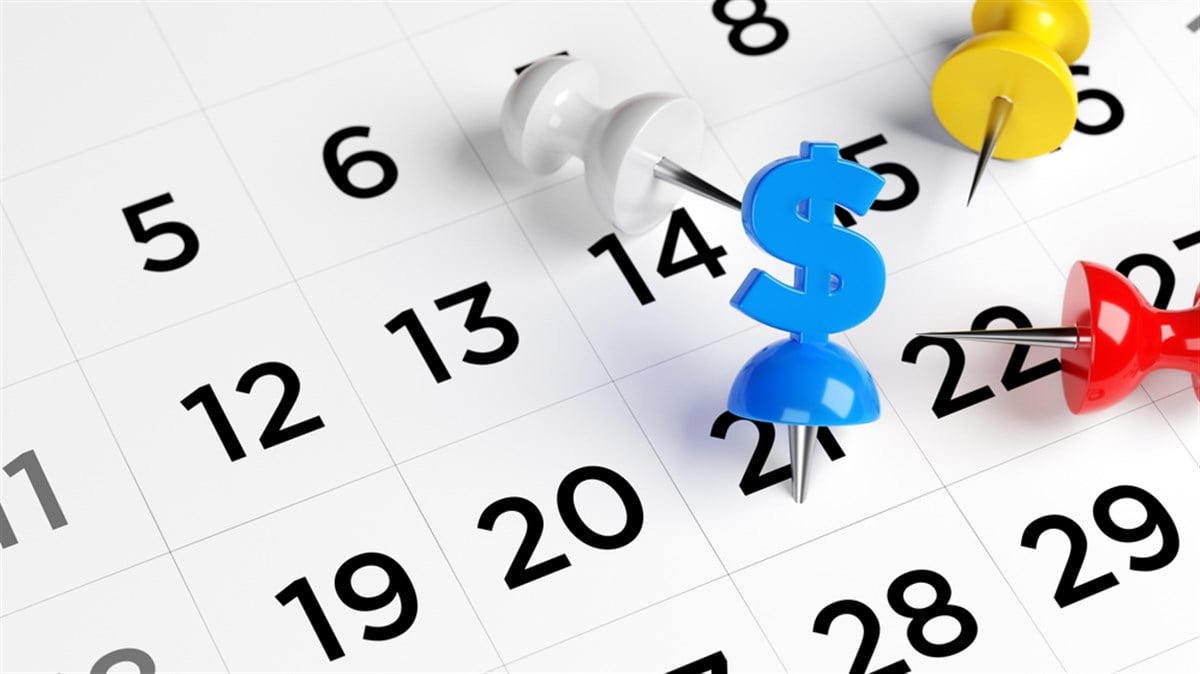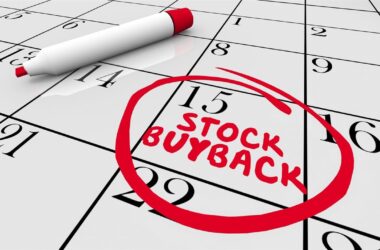Key Points
- Many public companies pay dividends regularly, usually quarterly, semi-annually or annually.
- The dividend payment date refers to when these payments are due.
- Knowing when these payments come from companies is vital for your financial plan.
- 5 stocks we like better than General Electric
If you’re considering investing in a dividend stock, you’re likely wondering when your dividend payment date is. After all, dividend stocks are ideally about earning a steady income stream.
Many public companies pay dividends regularly, usually quarterly, semi-annually or annually. Knowing when these payments come from companies is vital for your financial plan.
But before investing in dividend stocks, it’s also crucial to understand how they work. By the time you finish this article, you’ll understand what dividend payment dates are, why they’re important as an income investor and how to think about them strategically.
What is a dividend payment date?
Dividends are payments made by publicly traded companies out of their profits distributed to you and other shareholders. When a company pays dividends, you will receive either cash or stock in exchange for your shares in the company. Naturally, if you’re expecting income from an investment, you’ll want to know when you’ll get paid. So what is the dividend payment date?
The dividend payment date refers to when these payments are due. They typically hinge upon when companies declare dividends and when their financial periods close. For example, companies conducting business during the first three months of the year (January, February and March) will announce their dividends in February and pay them in March.
Companies conducting business from April through June will have the same dividend payment schedule. July through September will follow a similar schedule, and so on. Most companies pay dividends quarterly or semi-annually. They have specific payment dates on the last day of each quarter or every six months, respectively. For instance, Procter & Gamble NYSE: PG follows a quarterly schedule and often pays dividends in February, May, August and November.
Companies sometimes have special dividends that don’t match their normal dividend payout dates.
When comparing your investment options, remember that dividend stocks that pay quarterly dividends often have higher yields because stocks with higher yields are usually riskier than those with lower yields.
Understanding dividend payment dates
Companies set stock dividend dates after they announce their earnings and decide how much money they will have available to pay dividends.
Once a company has decided to pay a dividend, it also has to decide on the payment date. Depending on the company and the timing, the company may have more than one option, but there are some fundamental rules that all companies follow.
Dividend payment and relevant dates
It can help you plan your income for the year and give you a date to look forward to. However, some companies choose to pay dividends earlier or later than scheduled. A company’s dividend payment date is fixed when it declares its dividends before the financial period ends. These dates are published in the company’s annual report and Form 10-Q, which includes unaudited financial statements, providing a view of the throughout the year. To find your dividend payment date, visit the company’s investor relations website.
Here, you’ll usually find a section dedicated to dividend payments. You can also find some of this information on each stock summary on MarketBeat. The dividend payment date is essential information when deciding whether to invest in a company. Knowing the dates gives you an idea of when you will receive your payments and how much they will be worth.
Declaration date
The declaration date is the day the company’s board of directors officially announces the dividend amount. The board establishes how much each shareholder will receive and when the payment is due, which often marks the beginning of a company’s quarterly or semi-annual dividend cycle. In addition to tracking dividend payments, the declaration date is significant from a tax perspective. Dividend payments are generally taxable as ordinary income.
When you receive your dividend payment on its designated date, you’ll need to know when it was declared to accurately report it on your taxes. The date also marks the period when the stock price may be affected. When a company declares a dividend, you may buy shares in anticipation of receiving payments. On the other hand, you may sell stock to rather than receive dividends.
Record date
Ex-date
When a company declares a dividend payment, it sets the time and date that shareholders can expect to receive their income. Dividend payment declarations usually indicate the official “ex-dividend” date or “ex-date.” The ex-dividend date usually falls one business day before the record date.
If you purchase a stock just before the declared payment date, you can’t reap the benefit of the income payment. However, if you buy before the ex-dividend date and sell after, you’ll get the dividend if you meet the other criteria. As a general rule, avoid purchasing stock on the ex-dividend date.
For example, if a company declares a dividend of 30 cents payable on December 20, and you buy the stock on December 18, you pay the total price of $10. You will only receive $9.70 in dividend payments because the stock price decreases by the amount of the dividend on the ex-dividend date. The price of your stock adjusts downward by 30 cents.
Dividend payment date processes
Dividend payment dates are influenced by several factors, including:
- Company policies and practices: Some companies have a set dividend payment schedule, while others may pay dividends more irregularly. The company’s board of directors typically has the final say on when dividends are paid.
- Earnings and financial health: Companies that are profitable and have a strong financial position are more likely to pay dividends. The amount of the dividend is often based on the company’s earnings per share.
- Economic conditions: Economic conditions can also impact dividend payment dates. During periods of economic uncertainty, companies may be more likely to delay or reduce dividend payments.
- Market dynamics: Market conditions can also influence dividend payment dates. If the stock price of a company is declining, the board of directors may decide to delay or reduce the dividend to conserve cash.
Real-world examples and case studies
Here are some real-world examples of dividend payment dates. Remember to consult the company’s proxy statement or website for the most up-to-date information.
- Apple Inc. NASDAQ: AAPL pays its dividends every quarter, on the 10th business day of each month. The ex-dividend date is two business days before the record date. For example, if the record date is January 15, the ex-dividend date will be January 13.
- Microsoft Corporation NASDAQ: MSFT pays its dividends every quarter, on the third Friday of each quarter. The ex-dividend date is two business days before the record date. For example, if the record date is March 18, the ex-dividend date will be March 16.
- JPMorgan Chase and Co. NYSE: JPM pays its dividends every quarter, on the first Monday of each month. The ex-dividend date is two business days before the record date. For example, if the record date is January 10, the ex-dividend date will be January 8.
Strategies for maximizing dividend income
Dividend income can earn you significant passive income. There are several strategies to maximize that income, including:
- Pre-ex-dividend date purchases: When you buy a stock on or before the ex-dividend date, you’re entitled to receive the next dividend payment. The ex-dividend date is the date on which the stock begins trading without the dividend attached.
- Post-ex-dividend date purchases: If you buy a stock after the ex-dividend date, you won’t get the next dividend payment. However, you could still benefit from the stock’s price appreciation.
- The impact of taxes on dividend income: Dividend income is taxed at the same rate as ordinary income. This means that it’s taxed at a higher rate than capital gains, which are taxed at a lower rate. However, several tax-efficient investment strategies can minimize your tax impact. These strategies include investing in dividend-paying stocks in a tax-advantaged account like a Roth IRA or a 401(k) plan, investing in exchange-traded funds (ETFs) that focus on dividend-paying stocks and using a dividend capture strategy that involves selling a stock just before the ex-dividend date and then repurchasing the stock after the ex-dividend date.
- Reinvesting dividends: One of the best ways to maximize dividend income is to reinvest your dividends. This means using your dividend payments to buy more shares of the same stock. This way, you can compound your returns and grow your dividend income over time.
- Dividend reinvestment plans (DRIPs): A dividend reinvestment plan (DRIP) is an investment strategy that allows you to use your dividend proceeds from your existing shares to purchase additional shares of stock in the company instead of receiving cash payments. Instead of waiting for dividends to accumulate over time, you can put those dollars to work immediately by reinvesting them in more shares of the same company. You can also add funds from other sources. DRIPs can be attractive because they provide an easy way to diversify your portfolio and increase long-term returns. If you’re a small investor, DRIPs are a popular option if you’re looking to add to your holdings of a particular stock when it may be more difficult to obtain shares directly through a transfer agent or broker.
For example, if you own shares of companies like The Coca-Cola Company NYSE: KO, Pfizer Inc. NYSE: PFE, Johnson & Johnson NYSE: JNJ and General Electric NYSE: GE, they are all part of popular DRIP programs. In addition, if you wish to pay less in commissions, you can use your dividend payments to purchase new shares through a DRIP.
Make the most out of dividend payment dates
Dividend payments may vary from quarter to quarter and year to year, depending on a company’s financial health. Understanding dividend payment dates is a must if you’re an income investor. Dividends can provide you with an additional source of income that has more predictability than stock market returns.
For example, you may prefer to see money arrive in your accounts in the same months you receive your regular salary. By understanding the declaration, record and ex-dates and taking advantage of DRIPs, you can make the most out of your dividend payments. Dividend payment dates give you peace of mind because they help you anticipate when your payments will arrive, allowing for better budgeting or even reinvestment opportunities.
Dividends can increase your long-term portfolio value and may offer compounding effects if you reinvest those payments into other stocks or funds. Additionally, certain qualified dividends may get favorable tax treatments, increasing your potential returns. Researching a company’s dividend policy before investing can also provide insight into its financial health and management style and help you make more informed decisions about where your money goes.
Learn more about the 50 best dividend stocks and dividend capture stocks on MarketBeat.
Before you consider General Electric, you’ll want to hear this.
MarketBeat keeps track of Wall Street’s top-rated and best performing research analysts and the stocks they recommend to their clients on a daily basis. MarketBeat has identified the five stocks that top analysts are quietly whispering to their clients to buy now before the broader market catches on… and General Electric wasn’t on the list.
While General Electric currently has a “Moderate Buy” rating among analysts, top-rated analysts believe these five stocks are better buys.
View The Five Stocks Here




